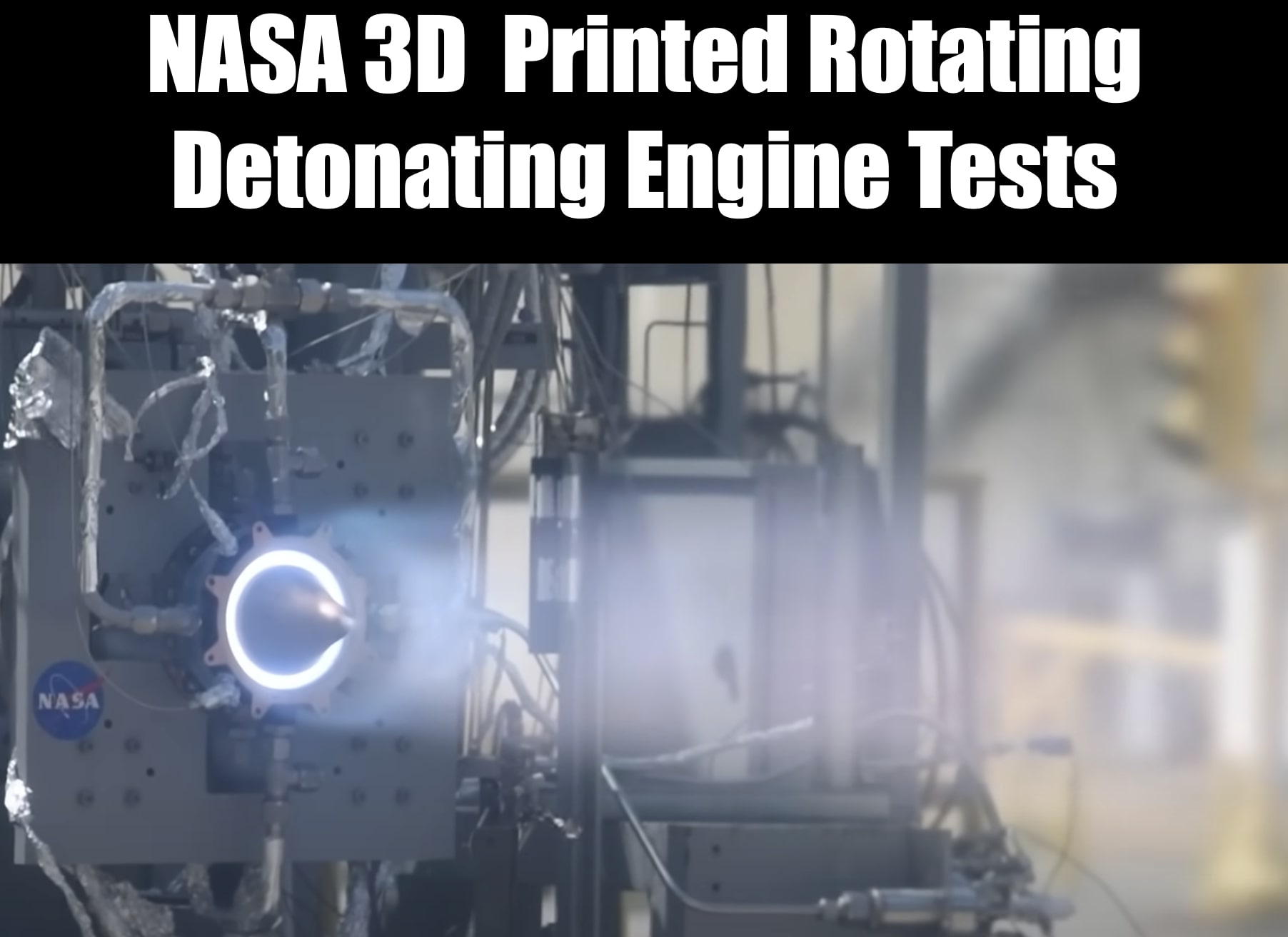NASA’s Marshall Space Flight Center in Huntsville, Alabama, recorded ignition of a full-scale Rotating Detonation Rocket Engine combustor, which was fired for a record 251 seconds and achieved more than 5,800 pounds of thrust.
NASA has stated their intention to create a 10,000 lbs thrust engine.
Rotating detonation engine could be up to 25% more efficient than traditional jet engines. This could make airplanes and missile faster or with longer range. Smaller weapons could reach the same speeds and ranges as today’s missiles. Rotating detonation rocket engines (RDREs) use detonation as the primary means of energy conversion, producing more useful available work compared to equivalent deflagration-based devices; detonation-based combustion is poised to radically improve rocket performance compared to today’s constant pressure engines, producing up to 10% increased thrust. This new propulsion cycle will also reduce thruster size and/or weight, lower injection pressures, and are less susceptible to engine-damaging acoustic instabilities.

Brian Wang is a Futurist Thought Leader and a popular Science blogger with 1 million readers per month. His blog Nextbigfuture.com is ranked #1 Science News Blog. It covers many disruptive technology and trends including Space, Robotics, Artificial Intelligence, Medicine, Anti-aging Biotechnology, and Nanotechnology.
Known for identifying cutting edge technologies, he is currently a Co-Founder of a startup and fundraiser for high potential early-stage companies. He is the Head of Research for Allocations for deep technology investments and an Angel Investor at Space Angels.
A frequent speaker at corporations, he has been a TEDx speaker, a Singularity University speaker and guest at numerous interviews for radio and podcasts. He is open to public speaking and advising engagements.


Surprised to see no mention on NBF of the propellentless drives sent up by IVO on an F9 in June for testing.
https://www.forbes.com/sites/davidhambling/2023/11/17/controversial-quantum-space-drive-in-orbital-test-others-to-follow/?sh=1947c571742a
How many have commented over the years, “Just send one up, already!”?
Well, here we go…
Meanwhile in China
“China develops ‘world’s most powerful’ hypersonic engine that could reach Mach 16”
https://interestingengineering.com/military/rotating-and-straight-oblique-detonating-engine
Imagine turning that RCE (rotating combustion engine) into a controlled thermal/nuclear reaction/combustion designed with scale in mind. Now imagine this new pulsed energy, rather using a circular combustion, a linear combustion is achieved, in where energy bursts are shot right behind each other, aggregating the existing/initial energy burst, by rapid fire pulsed energy. In theory, this could aggravate the pulse energy into unimaginable speeds & minimize energy waste by the linear use of energy.
What’s going on here? If you attach such engines to a starship, how many tons can it then carry?
The shortest answer I can think of is, because it’s detonation instead of regular burning, the pressure is much higher. With increased pressure comes increased temperature, therefore you have more thermal energy to convert to kinetic with your expanding nozzle.
You can’t actually drive the temperature up significantly at this point: State of the art rocket engines already have combustion temperatures so high that fundamental chemistry caps them: Go any higher and endothermal reactions like CO2 breaking down into soot and oxygen absorb the additional energy.
What you get with higher combustion pressure is the ability to have a higher expansion ratio before the pressure drops below ambient in the atmosphere, causing instabilities. So higher efficiency. And the ability to pack more thrust into every square meter of engine.
And with the non steady state operation, you get to pump the fuel into the chamber at lower pressure than the combustion pressure, which is a big savings on the fuel pumps. Not only are they doing less work, those moving parts are subject to much less extreme conditions.
The oxidizer pump in a Raptor is experiencing conditions that make a cutting torch look mild. I don’t think most people appreciate just how incredible the engineering on that pump is, and especially the metallurgy.
NASA=National “Aeronautics” and Space Administration. It’s for planes.